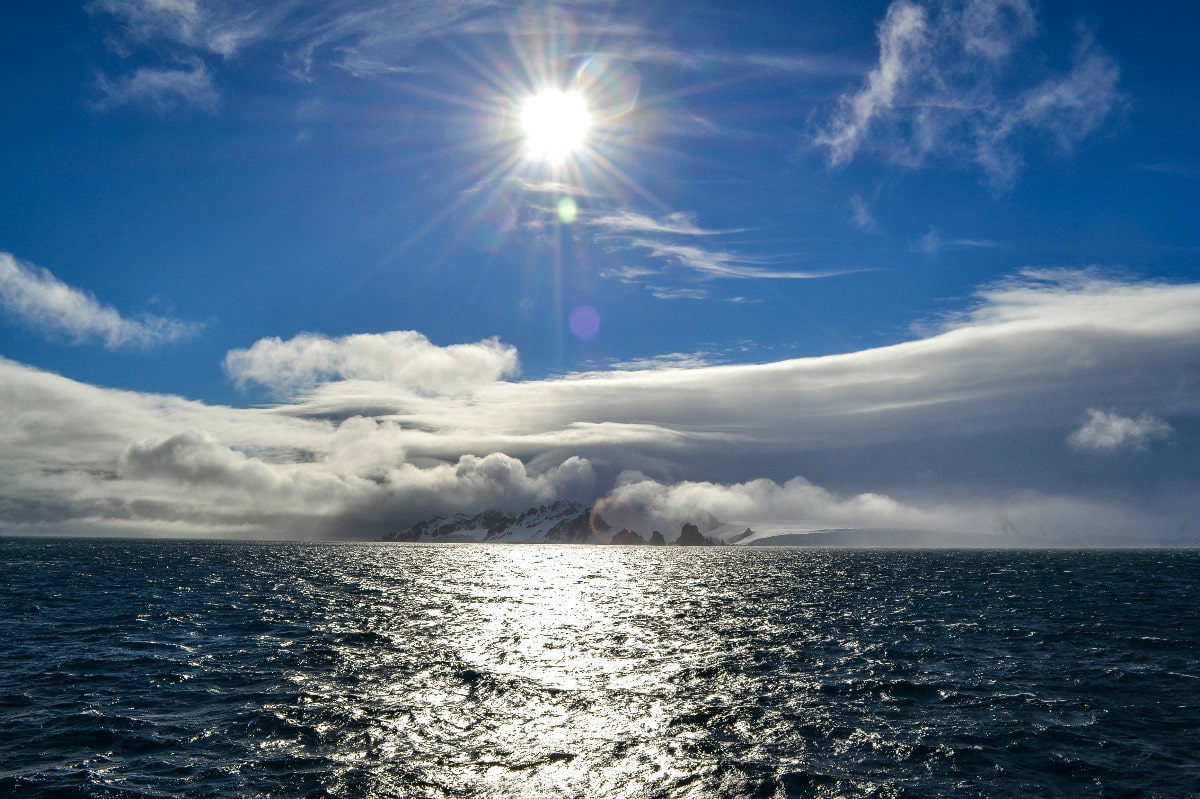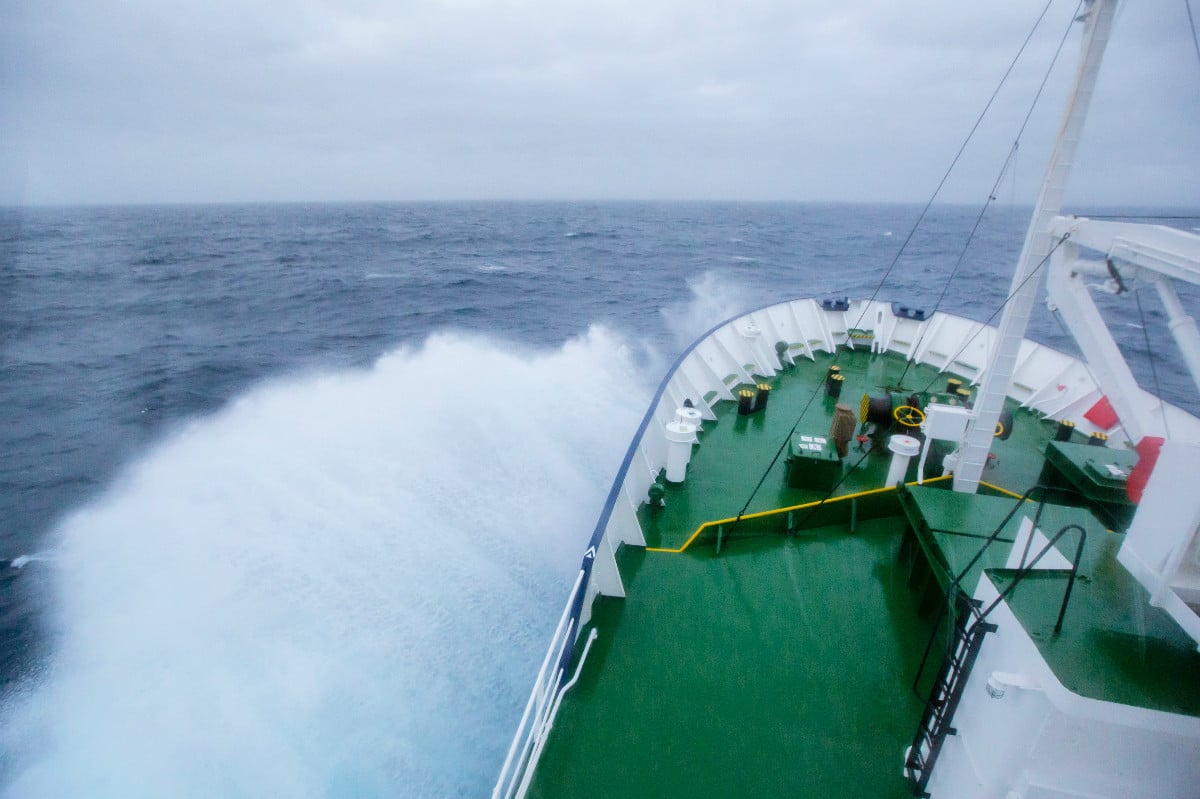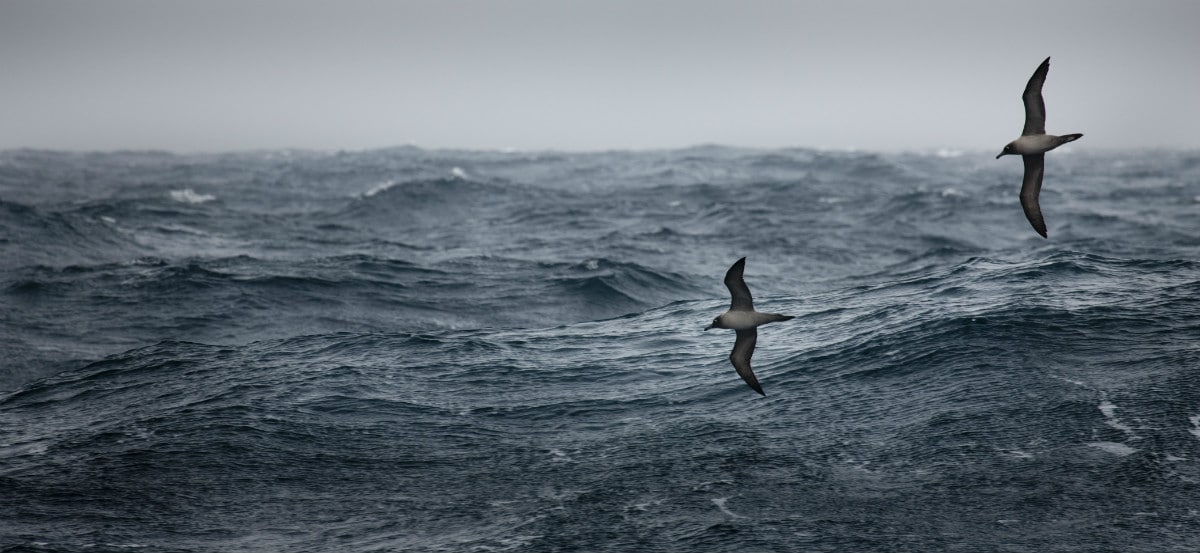As part of your Antarctic expedition, you’ll be crossing the Drake Passage, a stretch of water that has great significance to the history of polar exploration. Stretching from the bottom tip of South America to just north of the Antarctic Peninsula, this is one of the most dramatic, unforgettable crossings you could hope to experience.
However, this journey is not one to be underestimated, which is why we’re here to help you learn a little more about the Drake Passage as well as our top tips to survive it.
A unique part of the ocean

Read more: Should I do a Fly/Sail voyage to Antarctica?
The Drake Passage is about 1,000 kilometres wide, starting at the southernmost tip of Chile, Cape Horn, and bridging the gap to the South Shetland Islands. It’s the meeting point of the icy polar conditions of Antarctica and the slightly warmer and humid Tierra del Fuego climate.
It has an average depth of about 3,400 metres, and experiences strong winds from the west, especially around Cape Horn. In addition, the passage is part of the Antarctic Circumpolar Current – the world’s most voluminous current, according to Encyclopaedia Britannica. This means water flows through the Drake Passage at an estimated of between 95 and 150 million cubic metres per second.
Keen for one less Drake crossing? Choose one of our Fly/Sail voyages!
The history of the Drake Passage
The fastest way to reach Antarctica by sea, crossing this particular stretch of ocean has become a rite of passage for many a polar explorer.
While the Drake Passage was named for renowned explorer Sir Francis Drake, the Englishman wasn’t the first to cross the passage. That particular honour goes to Dutch explorer Willem Schouten, who discovered the route on his 1615-1616 voyage.
The Drake Lake and the Drake Shake

Read more: Why adventure is good for your wellbeing
Seasoned sailors familiar with the passage will know that it can have two distinct conditions, nicknamed the Drake Lake and the Drake Shake. This refers to the two extremes you can experience – either incredibly calm, smooth conditions, or rippled with impressive waves.
Fortunately, our ships are designed to handle these types of waters, and our experienced crew have sailed the passage many times before, so you can rest assured you’re in the safest of hands.
However, if you do encounter the Drake Shake and you aren’t a seasoned polar sailor, there are a number of ways you can minimise the effects of sea sickness.
Dealing with the Drake Passage
Even if you don’t usually experience motion sickness, the conditions of the Drake Passage can still take some getting used to. Learn a little more about why we get seasick in our blog post here.
You can help to minimise the effects of sea sickness with a few basic techniques:
- Staying hydrated is key, as is avoiding drinking alcohol. Eat light, regular meals.
- Stay active by going for a walk around the ship or venturing up to the deck.
- Getting fresh air can help. When you’re up on deck, keep one hand on the railing, and your gaze on the horizon to steady yourself.
- If you are feeling queasy, lie down flat in your bed or bunk with your eyes closed.
- If your symptoms persist, the Polar Pioneer’s doctor will be on-hand to provide assistance.
Sea sickness medication can be useful for some passengers, but only if taken early enough. Our expedition teams have yet to find herbal sea sickness remedies, or pressure point bands an effective way of managing sea sickness alone. Please consult your GP before departure to determine what medication could work for you.
Staying busy on board

Another way to pass your time while crossing the Drake Passage is by attending one of our lectures on the fascinating history and wildlife of the Antarctic region. You’ll learn about anything from the old whaling stations on South Georgia, to the heroic exploits of Ernest Shackleton, as well as fun interesting facts about the whales, penguins and seals that inhabit these waters.
In addition to being a good way to relieve sea sickness symptoms, spending some time up on deck also gives you the chance to spot some of the local wildlife as well as snap a few photos – bird watching enthusiasts should keep an eye out for the Antarctic petrel, a chocolate and white bird that often flies alongside ships, as well as the skua and the mighty albatross. We recommend a neck strap for any camera gear to keep your hands free to hold onto the railing and prevent expensive gear from flying overboard.
To learn more about our Antarctica voyages, take a look at our brochures online.

